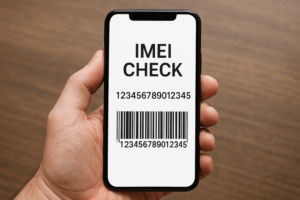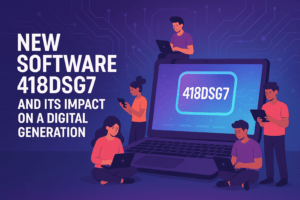I still remember the moment I first realized my phone wasn’t really mine. I had just bought a brand-new Android flagship. Slick design, fast processor, camera sharper than my actual eyes. And then came the flood of permission requests. Access your location? Your microphone? Your browsing history? Even your clipboard?
It felt like I hadn’t bought a phone. I’d bought a very expensive spy.
That’s when I heard about Graphene OS—a name whispered in Reddit threads, privacy forums, and hacker circles. At first, it sounded like another custom ROM project, probably more hassle than it was worth. But after one too many app trackers, I finally gave it a shot.
Now, years later, I’m still using Graphene OS. And the experience hasn’t just changed how I use my phone. It’s changed how I think about control, digital autonomy, and what it means to live privately in a hyper-connected world.
What Exactly Is Graphene OS?
If you haven’t heard of Graphene OS, that’s by design. It doesn’t advertise. It doesn’t sell. It doesn’t gather metrics. It simply exists—for the people who need it.
Technically speaking, Graphene OS is a hardened, privacy-focused version of the Android Open Source Project (AOSP). That means it starts with the basic Android foundation, but strips out all the Google surveillance extras. No Play Services. No auto-syncing of your every move to the cloud. Just a clean, secure, lean system.
But calling Graphene OS a “de-Googled Android” is like calling a rally car a stripped-down Honda. It’s not just what’s removed—it’s what’s added. Memory safety features. Hardened exploit mitigations. Verified boot processes. App sandboxing improvements. Regular security updates that often outpace stock Android.
More than any single feature, Graphene OS is defined by its philosophy. It assumes you own your phone—not the other way around.
The Installation Experience: Scary at First, Empowering by the End
Let’s be honest: installing Graphene OS is not as easy as downloading an app. You’ll need a compatible Pixel device, some basic technical know-how, and the willingness to wipe your phone clean.
The official website offers an excellent web installer that makes the process approachable. But the act of flashing a new OS onto your daily driver? It’s intimidating. It was for me.
But it’s also empowering. You don’t need to root anything. You don’t void warranties. And the moment it boots up, that clean Graphene OS home screen is like a breath of fresh air. No notifications, no suggestions, no bloatware. Just you and your device.
Installing Graphene OS reminded me that a phone should be a tool—not a tracking device.
Life with Graphene OS: What You Gain and What You Give Up
Every time I recommend Graphene OS, people ask the same question: “But can I still use all my apps?”
Yes, you can. But it depends how you want to use them.
Graphene OS gives you options. You can install apps via F-Droid (for open-source purists), Aurora Store (which lets you download apps anonymously from the Play Store), or even run Play Services in a sandboxed user profile—completely isolated from the rest of the system.
It’s not about what you can’t do—it’s about choosing what you allow. And that feels radically different from traditional Android, where permissions are granted by default, and revoking them often breaks functionality.
That said, some things will be clunky. Push notifications for apps like Gmail or WhatsApp may require workarounds. Some banking apps may complain. But over time, you learn that the trade-off is worth it. You’re no longer leaking data with every tap.
In a world where convenience often costs privacy, Graphene OS offers an escape route. A reset button. A chance to reclaim a bit of what we’ve quietly given away.
Why Privacy Isn’t Just for Journalists and Hackers
A common myth: you only need something like Graphene OS if you’re doing something wrong. That couldn’t be further from the truth.
You don’t need to be Edward Snowden to care about privacy. You just need to be someone who values boundaries. Maybe you don’t want advertisers predicting your every move. Maybe you don’t trust your government. Maybe you just want your phone to stop suggesting ads about something you whispered to a friend yesterday.
Graphene OS isn’t about hiding. It’s about being left alone. It’s about having a digital life that’s yours and yours alone.
How Graphene OS Changes the Way You Use a Phone
When I first switched to Graphene OS, I thought I’d miss the bells and whistles. Google Assistant. Automatic backups. Smart replies.
But what I found instead was clarity. Fewer distractions. Less clutter. More intention. I don’t get 50 pings a day from apps I never asked for. My home screen is minimal. My battery lasts longer. And best of all? I know who’s watching: nobody.
Using Graphene OS has changed my habits. I open apps when I need them, not when they lure me. I think twice before downloading something. I look at permissions the way I look at my front door.
And in that simplicity, I found peace.
Who Is Graphene OS For?
You don’t have to be a tech wizard to use Graphene OS. You just need to care enough to make a change.
It’s for:
- Parents who don’t want their kids tracked
- Journalists working in hostile regions
- Citizens under oppressive surveillance
- Normal people who are just sick of targeted ads
Graphene OS is for anyone who looks at the current tech landscape and says, “This isn’t good enough.”
What’s Next for Graphene OS?
The project keeps growing. Each month brings new features, stronger protections, tighter code. It remains community-driven, transparent, and fierce in its mission.
And while it’s still Pixel-only for now (to maintain security integrity), there’s hope that similar ideas will inspire broader adoption.
Because the truth is, the world needs Graphene OS. Not just as a product—but as a principle.
Final Thoughts: More Than Just an OS
There’s a reason I still recommend Graphene OS after all this time: because it reminds me that technology doesn’t have to work against us.
It can work for us. It can protect us. It can give us back the one thing most tech companies quietly take away: agency.
So if you’ve ever felt uneasy about how much your phone knows—how much it tells—then maybe it’s time to try something different. Something honest. Something free.
Graphene OS won’t change the world overnight. But it just might change your relationship with the screen in your hand.
And that’s a pretty good place to start.




